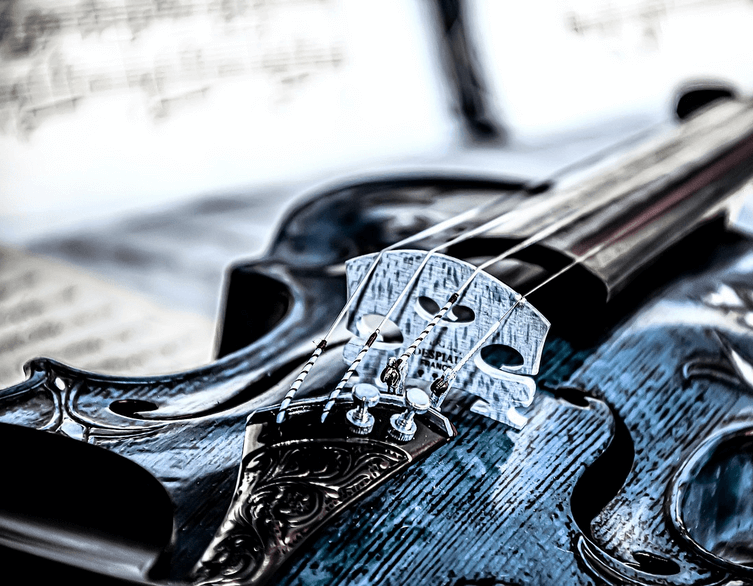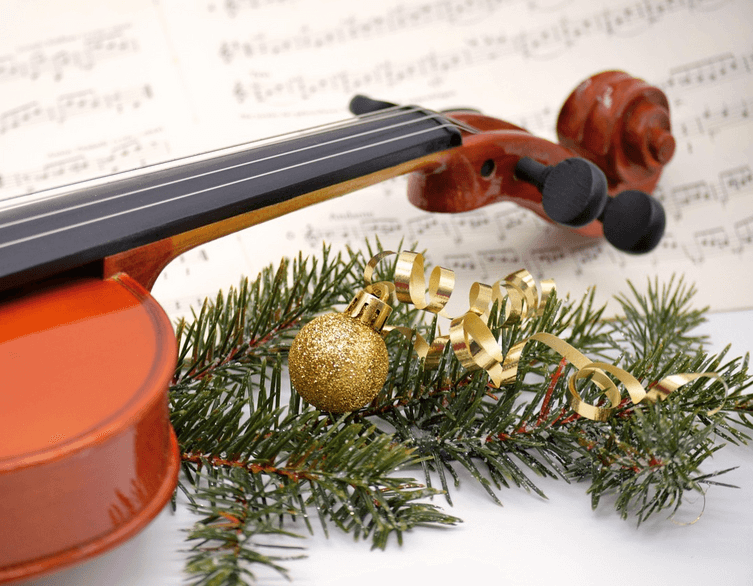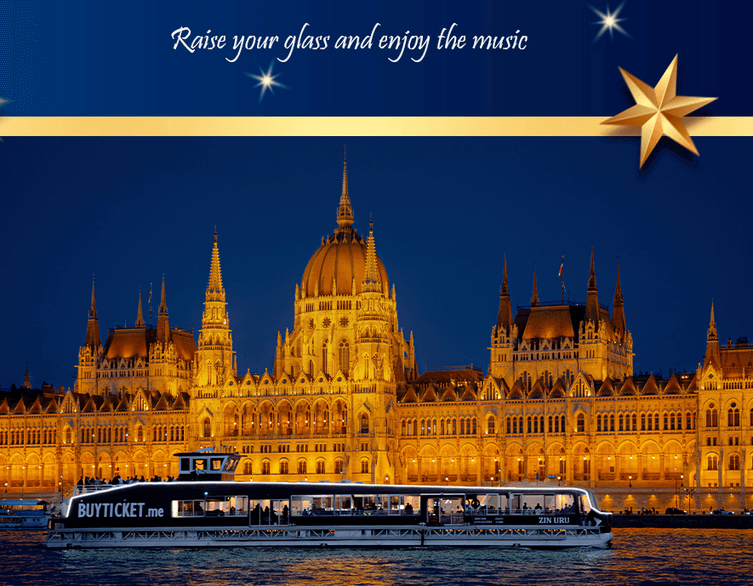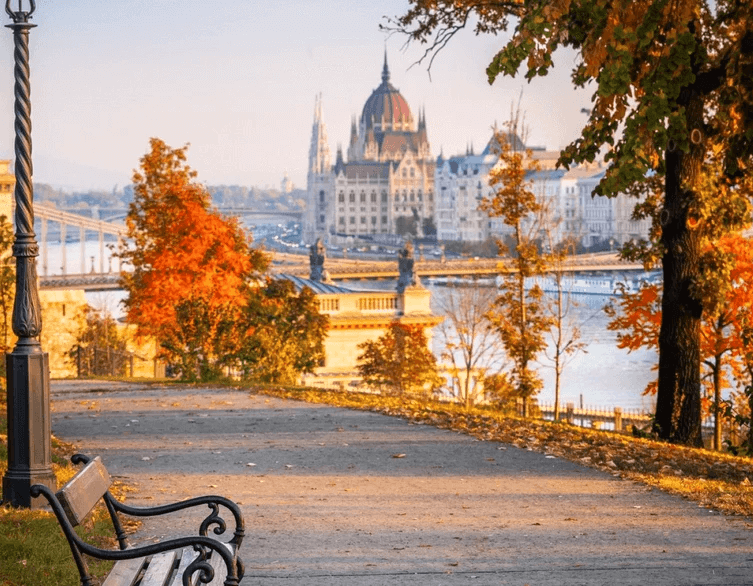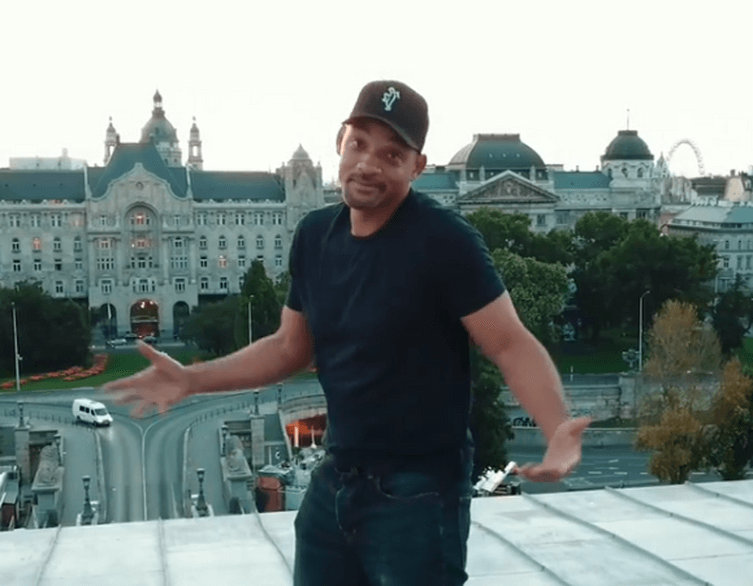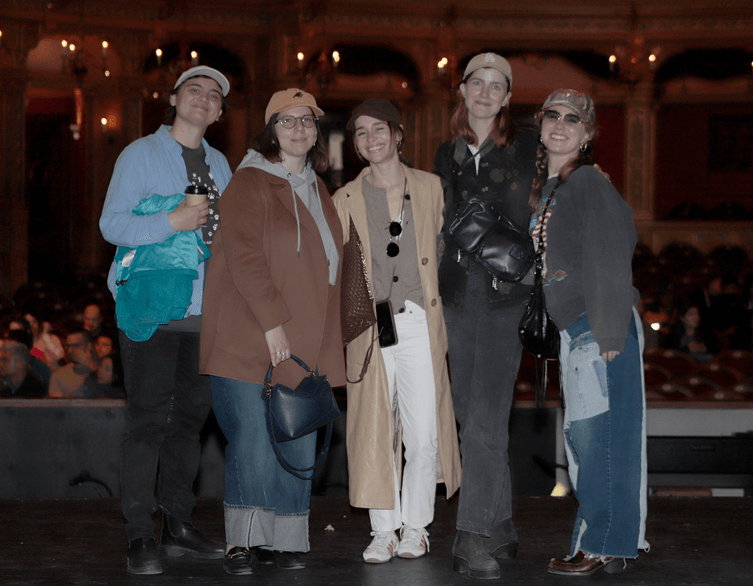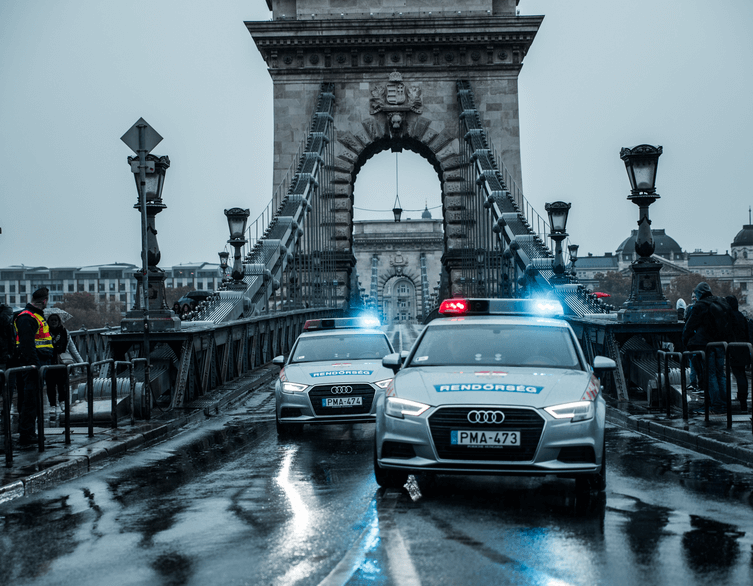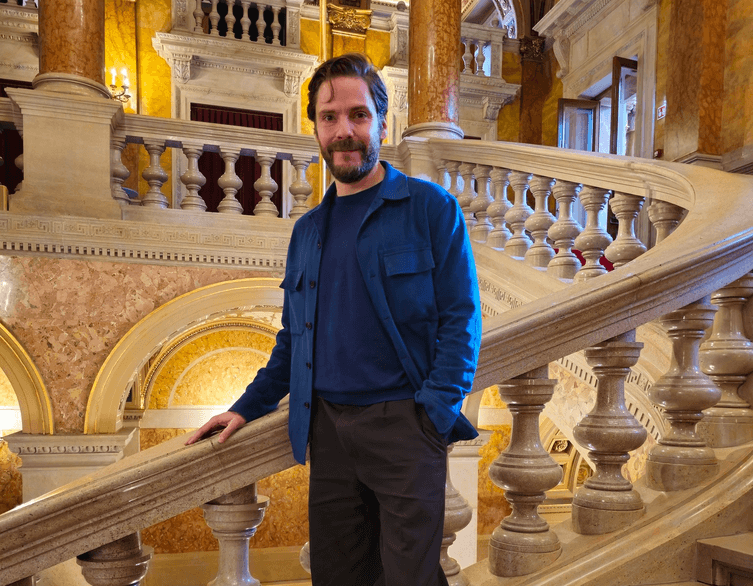The Hungarian State Opera House: A Cultural Gem in the Heart of Budapest
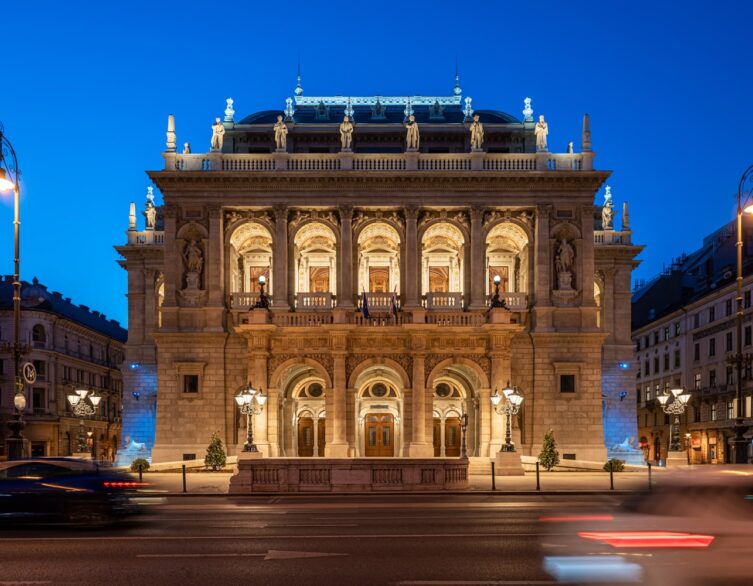
The Hungarian State Opera House, located on the iconic Andrássy Avenue in central Budapest, is a magnificent neo-Renaissance building that has been a cultural landmark since its opening in 1884. Designed by renowned architect Miklós Ybl, this historic opera house is the second largest in Hungary and a must-visit destination for tourists interested in art, architecture, and music.
Architectural Significance
The Hungarian State Opera House in Budapest is a significant architectural landmark that showcases the grandeur and elegance of 19th-century design. Designed by renowned Hungarian architect Miklós Ybl (who also designed the Várkert Bazár, and worked on the renovation of the Royal Palace of Buda), the opera house is a prime example of Neo-Renaissance architecture, with elements of Baroque style incorporated into its design.
Construction of the opera house began in 1875 and was completed in 1884. The building’s façade features intricate decorations, including statues of famous composers like Ferenc Liszt and Ferenc Erkel. The interior is equally impressive, with a rich color palette, ornate gold leaf ornamentation, and exquisite frescoes by prominent Hungarian artists such as Bertalan Székely, Mór Than, and Károly Lotz.
One of the most striking features of the opera house is its horseshoe-shaped auditorium, which is considered one of the best in the world in terms of acoustics. The auditorium is adorned with a massive bronze chandelier and a stunning fresco on the ceiling depicting the Greek gods on Olympus.
The Hungarian State Opera House is not only an architectural gem but also a symbol of Hungary’s rich cultural heritage. Its design and construction involved the collaboration of numerous Hungarian artisans, ensuring that the building would stand as a testament to the country’s artistic prowess.
Today, the opera house continues to be a major cultural hub in Budapest, hosting performances by the Hungarian National Ballet and serving as a venue for the annual Budapest Opera Ball. Visitors can take guided tours of the building to appreciate its architectural significance and learn about its fascinating history.
In summary, the Hungarian State Opera House is an architectural masterpiece that exemplifies the grandeur and elegance of 19th-century design. Its stunning façade, opulent interiors, and exceptional acoustics make it a must-see destination for anyone interested in architecture, music, or Hungarian culture.
Cultural Significance
The Hungarian State Opera House in Budapest is a cultural icon and one of the most important opera houses in Hungary. The opera house was built during a period of great cultural and artistic flourishing in Hungary in the late 19th century. Its construction was funded by the city of Budapest and Emperor Franz Joseph I of Austria-Hungary, signifying the importance placed on the arts by both the local government and the Habsburg monarchy at the time. The building itself is considered a masterpiece of Neo-Renaissance architecture, with ornate decorations, paintings and sculptures by leading Hungarian artists of the era.
Since its opening, the Hungarian State Opera House has been home to countless performances of operas, ballets and concerts. Many important artists have graced its stage over the years, including composer Gustav Mahler who served as director from 1888-1891. The reputation and prestige of the opera house helped establish Budapest as a major cultural capital in Europe.
Today, the Hungarian State Opera House continues to be a vibrant center for the performing arts. It is home to the Budapest Opera Ball, a high society event that dates back to 1886. Thousands of tourists visit the opera house each year to admire its stunning architecture and interior. With a seating capacity of 1,261, it is known for having some of the best acoustics of any opera house in Europe.
The cultural significance of the Hungarian State Opera House extends beyond just the performances on its stage. It stands as an enduring symbol of Hungary’s rich artistic heritage and its status as a cultural leader in the region. For both local citizens and visitors from abroad, a trip to this magnificent building provides a glimpse into Budapest’s golden age and an appreciation for the important role the arts play in Hungarian society.
Provided Services
The Hungarian State Opera House in Budapest offers a range of services for visitors interested in experiencing this historic cultural institution.
Guided Tours
The Hungarian State Opera House in Budapest, a historic neo-Renaissance palace designed by renowned architect Miklós Ybl, offers guided tours for architecture and culture enthusiasts. These tours provide a unique opportunity to explore the recently restored opera house and learn about its rebirth, the restoration of its beautiful interiors to their former glory, and the innovative features installed to enable spectacular productions.
Guaranteed Tours: English-language tours are available daily at 13:30, 15:00, and 16:30. Each tour lasts approximately 60 minutes. Tours in other languages, such as Italian, Spanish, German, French, and Hungarian, can be requested by contacting the OperaTour team.
Tour Highlights:
- A short concert featuring soloists from the Hungarian State Opera
- Photography for non-commercial purposes is permitted (flash and tripods not allowed)
- Groups are limited to a maximum of 30 visitors
- Tours begin at the information desk in the entrance hall
- Children under 3 years old can join for free
Please be aware that the auditorium may be closed during rehearsals. In such cases, the tour will include visits to special, previously unseen areas of the opera house. Guided tours are not available during performances.
Tickets can be purchased up to one week in advance at the box offices or online.
Private Tours: Private tours can be arranged between 9:00 and 13:00 daily for groups of at least 15 paying participants. Alternatively, private tours with separate guides can be scheduled during the guaranteed tour times.
To register for a private tour, please contact the OperaTour team.
Performances
The Hungarian State Opera House in Budapest hosts a wide variety of performances throughout the year, showcasing the best of opera and ballet. The opera season typically runs from September to the end of June.
The repertoire includes classic operas by renowned composers such as Mozart, Verdi, Puccini, and Wagner, as well as works by Hungarian composers like Ferenc Erkel, the first music director of the Opera House who composed the Hungarian national anthem. Ballet performances feature classic productions and contemporary choreography.
Many acclaimed Hungarian and international artists have graced the stage of the Opera House over the years. Notable guests have included composer Gustav Mahler, who was director from 1888 to 1891, and conductor Otto Klemperer, who served as music director from 1947 to 1950.
In addition to opera and ballet, the Opera House hosts the annual Budapest Opera Ball, a prestigious society event that dates back to 1886.
Best deals of Budapest
The auditorium, with its horseshoe shape and excellent acoustics, provides an ideal setting to experience the performances. The ornate decoration, featuring paintings and sculptures by preeminent Hungarian artists, adds to the grandeur of the opera-going experience.
With a seating capacity of 1,261, the Opera House is not among the largest in the world, but it is considered one of the most beautiful. Ticket prices vary depending on the performance and seating category.
Whether you are an opera aficionado or simply appreciate world-class performing arts in a spectacular setting, attending a performance at the Hungarian State Opera House promises to be an unforgettable experience during your visit to Budapest.
Venue, Costume and Set Production/Rental
The Opera House’s grand spaces, including the auditorium, Feszty Bar and Eiffel Art Studios, can be rented for private events. The Opera’s event team assists with the organization of corporate and private functions in these elegant venues. The Opera House can produce custom-made costumes and sets for outside productions. Existing costumes and sets from the Opera’s repertoire are also available for rental.
Recording and Film Studios
Professional audio recording and film studios are available for rent within the Opera House complex. These well-equipped facilities are ideal for music and film productions.
Restaurant/Café
The Hungarian State Opera House in Budapest features an elegant café on the ground floor, providing a convenient dining option for patrons and visitors. The Opera Café offers a refined atmosphere that complements the grandeur of the historic opera house.
Guests can enjoy a selection of light meals, pastries, coffee, and other beverages before a performance or during a guided tour of the building. The café’s menu features traditional Hungarian dishes as well as international fare, catering to a variety of tastes.
With its prime location within the Opera House, the café allows diners to admire the ornate architecture and opulent décor of the foyer. The space is adorned with marble columns, gilded details, and elaborate frescoes, immersing patrons in the rich artistic ambiance of the Opera House.
The Opera Café is open daily, welcoming both ticket holders and visitors taking a tour of the facilities. It provides a lovely setting to relax and recharge while exploring one of Budapest’s most iconic cultural landmarks. Whether seeking a quick bite before a show or a place to linger and soak in the atmosphere, the café offers a memorable dining experience in a truly spectacular setting.
Gift Shop
The Opera Shop sells CDs, DVDs, books and souvenirs related to the Opera House, opera and ballet. It’s the perfect place to find a unique memento of your visit.
By providing these varied services, the Hungarian State Opera House aims to make the institution accessible to a wide audience and share its artistic and architectural riches with visitors from around the world.
House Rules
As a foreign tourist visiting the Hungarian State Opera House in Budapest, it’s important to be aware of the house rules to ensure a pleasant and respectful experience for all visitors. Here are some key points to keep in mind:
- Dress Code: While there is no strict dress code, it is recommended to dress appropriately for the occasion. Smart casual attire or evening wear is suitable for performances.
- Punctuality: Arrive at the opera house well in advance of the performance start time. Latecomers may not be admitted until a suitable break in the performance.
- Tickets: Make sure to purchase tickets from authorized sources, such as the opera house ticket offices, official website, or opera.jegy.hu. Unused tickets can be resold securely through the Ticketswap website.
- Photography and Recording: Photography for non-commercial purposes is allowed during guided tours, but flash photography and tripods are not permitted. Recording of performances is strictly prohibited.
- Mobile Devices: Turn off or silence your mobile phones and other electronic devices during performances to avoid disturbing fellow audience members and performers.
- Food and Beverages: Eating and drinking are not allowed inside the auditorium. Refreshments can be enjoyed during intermissions at designated areas.
- Smoking: Smoking is not permitted anywhere inside the opera house.
- Guided Tours: Visitors can join guided tours to explore the restored Opera House and learn about its history and architecture. Tours are available in multiple languages, and tickets can be purchased in advance.
- Accessibility: The opera house provides facilities for visitors with disabilities. Inform the staff of any special requirements in advance to ensure appropriate arrangements are made.
- Respect: Be respectful of the performers, staff, and fellow audience members. Avoid talking or making noise during the performance, and applaud appropriately at the end of each piece.
By following these house rules, foreign tourists can fully appreciate the grandeur and artistry of the Hungarian State Opera House while contributing to a positive and enjoyable experience for everyone.
Getting There
The Hungarian State Opera House is located in the heart of Budapest, on the iconic Andrássy Avenue at 1061 Budapest, Andrássy Avenue 22. As a major landmark and tourist attraction, it is easily accessible by various means of transportation.
Public Transportation
- Metro: The Opera House is conveniently located near the Opera station on the M1 (yellow) metro line.
- Tram: Tram lines 4 and 6 stop at the Oktogon stop, just a short walk from the Opera House.
- Bus: Several bus lines, including 105, 178, and 979, have stops near the Opera House.
Taxi
Taxis are readily available throughout Budapest. You can hail one on the street or have your hotel call one for you. Ensure the taxi is licensed and has a working meter.
Walking
If you are staying in the city center, the Opera House is within walking distance of many hotels and attractions. Andrássy Avenue is a pleasant, tree-lined street perfect for a leisurely stroll.
Parking
While driving in Budapest city center is not recommended due to traffic and limited parking, there are a few parking garages near the Opera House if you choose to drive. It’s best to check with your hotel or the Opera House website for the nearest parking options.
Accessibility
The Opera House is committed to providing access for visitors with disabilities. There are wheelchair-accessible entrances and seating areas. It is recommended to contact the Opera House in advance to make any necessary arrangements.
When planning your visit, be sure to allow ample time for transportation and arriving at the venue. Aim to arrive at least 15-20 minutes before the performance or tour to ensure a smooth and stress-free experience at this stunning cultural gem in the heart of Budapest.
Nearby Attractions
The Hungarian State Opera House is located in the heart of Budapest on the historic Andrássy Avenue. This prime location puts it within walking distance of several notable attractions that are worth visiting:
- Andrássy Avenue (Andrássy út): The Opera House is situated on this iconic boulevard, a UNESCO World Heritage Site lined with stunning neo-Renaissance mansions, luxury boutiques, and charming cafes. A leisurely stroll along the avenue will lead you to Heroes’ Square and City Park.
- St. Stephen’s Basilica (Szent István Bazilika): Just a 10-minute walk from the Opera House, this impressive neoclassical cathedral is one of the tallest buildings in Budapest. Visitors can explore the ornate interior and climb to the dome’s observation deck for panoramic city views.
- House of Terror Museum (Terror Háza Múzeum): Located just 5 minutes from the Opera House, this museum is dedicated to the fascist and communist regimes in 20th-century Hungary. It offers a sobering look into the country’s turbulent past.
- Hungarian State Opera House Museum: Within the Opera House itself, visitors can explore a small museum that showcases the history of the building and its performances. Guided tours are available to learn more about the architecture and inner workings of the opera house.
- Nagymező Street (Nagymező utca): Known as Budapest’s Broadway, this street adjacent to the Opera House is home to several theaters, including the Budapest Operetta Theatre and the Thália Theatre. It’s a lively area to explore in the evening when shows are running.
- Minipolisz: an interactive family center located in the heart of Budapest, designed to offer children between the ages of 3 and 12 a unique “grown-up experience”. This 1000 m2 mini-city provides a realistic environment tailored to children’s sizes, where they can explore and engage in activities that are typically reserved for adults.
These nearby attractions offer a diverse range of experiences, from architectural wonders to historical insights and cultural entertainment, all within easy reach of the Hungarian State Opera House.
Summary
The Hungarian State Opera House is a testament to Budapest’s rich cultural heritage and a symbol of the country’s enduring love for the performing arts. Whether you are an opera enthusiast or simply appreciate stunning architecture, a visit to this iconic building is an unforgettable experience that should not be missed during your stay in Budapest.
Image source: Hlinka Zsolt
Related news
Related events

